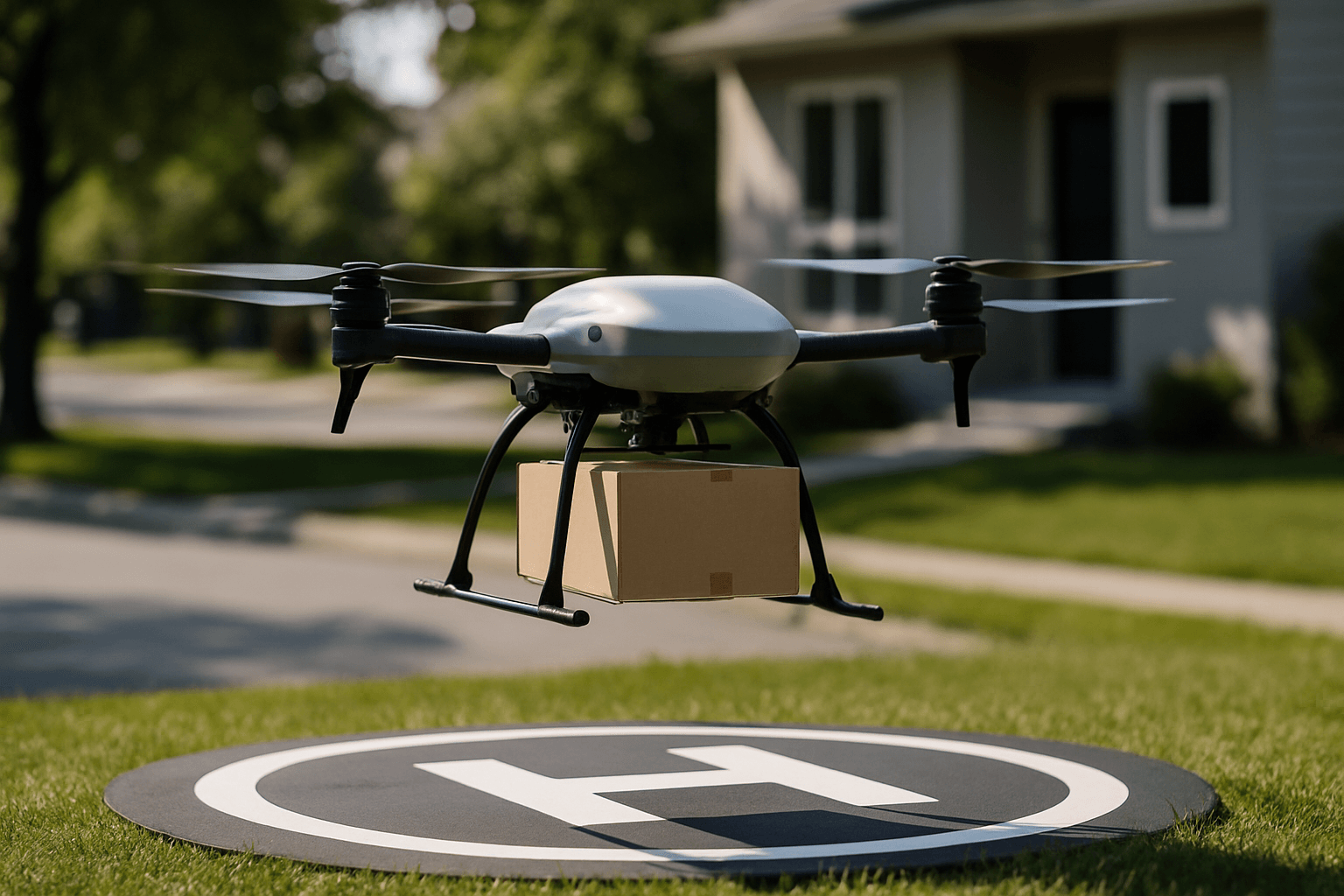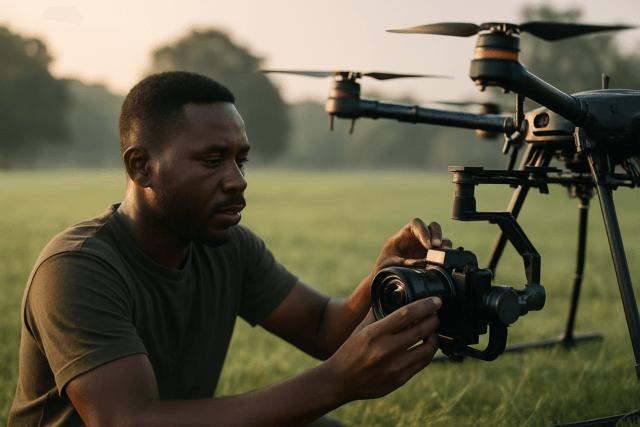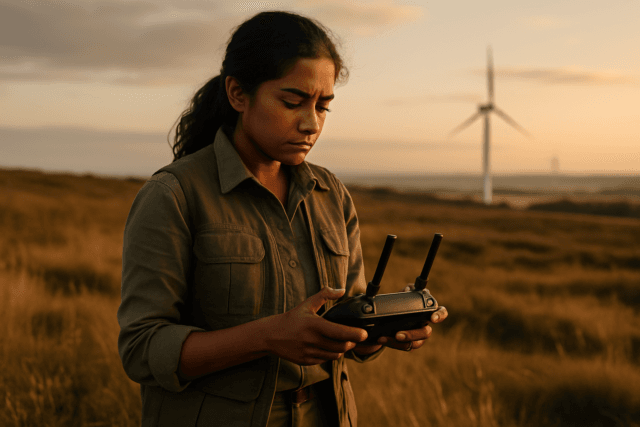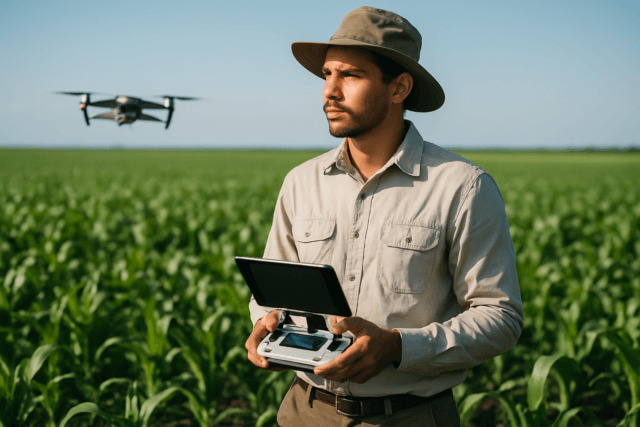The promise of aerial package delivery, once confined to science fiction, is rapidly transitioning into a tangible reality, poised to fundamentally reshape the landscape of logistics and last-mile transport. Drone delivery services (DDS), leveraging unmanned aerial vehicles (UAVs), represent a significant leap forward in addressing the burgeoning demands of e-commerce and the increasing need for expedited, efficient, and contactless solutions. Initially employed for military and surveillance purposes, drones have seen their applications evolve dramatically, finding a critical role in the commercial sector for delivering everything from medical supplies and groceries to retail parcels.
The Current Trajectory of Drone Delivery
The popularity of drone deliveries has experienced a significant upsurge since 2019, further accelerated by the COVID-19 pandemic, which underscored the value of contactless delivery options. This contactless form of delivery offered a safe and convenient alternative to traditional methods, driving an 80% increase in global package deliveries by drones in 2022, totaling nearly 875,000 shipments worldwide. Gartner predicts that by 2026, over one million drones will be facilitating retail deliveries, a substantial increase from just 20,000 currently. The global drone package delivery market is projected to reach USD 8 billion by 2027, growing at a compound annual growth rate (CAGR) of 41.8%. Looking further ahead, the market is estimated to reach around USD 16.07 billion in 2035, growing at a CAGR of 32.7% from 2025.
Regions leading the adoption include Asia (China, Japan for parcels), Africa (Rwanda, Ghana for medical supplies), Oceania (Australia, Vanuatu for food/personal care), Europe (Finland, Iceland, Switzerland for various retail products), and multiple states in the US and Canada. This growing acceptance and usage underscore a promising future for drone technology in retail and logistics.
Significant Benefits Driving Adoption
Drone delivery offers a compelling suite of advantages over conventional methods, making it an attractive solution for modern logistics:
Speed and Efficiency
One of the most compelling benefits is significantly reduced delivery times. Drones can often transport packages within minutes instead of hours, bypassing traffic congestion and logistical obstacles by taking direct, shorter air routes. This capability ensures on-time deliveries, particularly beneficial for urgent shipments like medical supplies or perishable goods. Autonomous operation further enhances efficiency, allowing drones to follow precise routes and operate continuously without breaks.
Cost Reduction
While initial investments in drone fleets and infrastructure can be substantial, drones offer significant long-term operational cost savings. Operating costs for drone delivery services are estimated to be 40% to 70% lower than traditional vehicle delivery models. They minimize the need for large fleets of delivery vehicles and reduce labor expenses by eliminating human drivers. Automated drone fleets require less maintenance, and electric drones offer substantial savings on fuel costs and reduce wear and tear on ground infrastructure.
Increased Accessibility
Drones can reach locations that are difficult or impossible for traditional delivery vehicles to access, such as mountainous regions, islands, or disaster-stricken areas. This makes them invaluable for humanitarian aid and the distribution of medical supplies, vaccines, and other essentials to remote or underserved communities.
Environmental Impact
Electric drones contribute to reduced environmental impact by emitting fewer carbon emissions compared to fuel-powered vehicles, making them a more sustainable option for last-mile deliveries. This shift aligns with global efforts to reduce carbon footprints and promotes eco-friendly business practices.
Contactless Delivery
The ability to provide contactless delivery with limited human intervention gained particular importance during the COVID-19 pandemic, leading to an upsurge in demand for drone delivery services.
Navigating Challenges and Hurdles
Despite the transformative potential, the widespread adoption of drone delivery faces several significant challenges across regulatory, technological, and social fronts.
Regulatory Compliance and Airspace Management
One of the biggest obstacles is the complex and evolving regulatory landscape. Aviation authorities worldwide, such as the Federal Aviation Administration (FAA) in the US and the European Union Aviation Safety Agency (EASA) in Europe, have strict rules governing drone operations. Key challenges include:
- Beyond Visual Line of Sight (BVLOS) Operations: Current regulations often require drones to remain within the operator’s visual line of sight, significantly limiting their operational range and scalability for last-mile delivery. Progress is being made, with the FAA relaxing limits on BVLOS flights and granting approvals to companies like Amazon.
- Air Traffic Management (ATM): Safely integrating autonomous drones into existing air traffic control systems requires advanced technologies and new protocols, posing significant challenges for urban integration.
- Noise Pollution: Drone noise during take-off, hovering, and flight is a concern, especially in noise-sensitive areas like residential zones, schools, and hospitals. Regulations and approval processes are being developed to manage and mitigate drone noise.
- Privacy Concerns: The integration of cameras and GPS technology into drones raises apprehensions among consumers regarding their personal information and surveillance.
Technological Limitations
While rapidly advancing, drone technology still presents certain constraints:
- Battery Life and Flight Range: Most commercial drones have limited battery life, typically offering only 20-40 minutes of flight time, restricting deliveries to shorter distances. Improving battery efficiency and developing next-generation batteries are crucial for extending autonomy.
- Payload Limitations: Drones are often restricted to carrying relatively light packages, typically under 5 kg (11 pounds), which limits their scope for larger deliveries.
- Environmental Challenges: Weather conditions like high winds, extreme temperatures, and storms can significantly impact drone performance, stability, and battery life, especially in rural areas less shielded by structures.
- Obstacle Avoidance and Autonomy: Achieving fully autonomous and safe drone operations requires sophisticated detect-and-avoid (collision management) systems and real-time decision-making capabilities, often still requiring human intervention for complex tasks.
Public Acceptance and Safety Concerns
Public acceptance is crucial for widespread adoption. Concerns about privacy, noise pollution, safety (e.g., potential for accidents, security risks like hacking or misuse, package theft), and job displacement due to automation need to be addressed through public education and community engagement. Communities must be convinced that the benefits outweigh potential drawbacks.
Key Players and Diverse Applications
Despite the hurdles, major industry players and specialized drone delivery operators are actively investing in and expanding their drone delivery initiatives.
Leading companies in the drone delivery market include:
- Alphabet Inc. (Wing): A subsidiary of Google, Wing has conducted extensive trials and commercial deliveries across three continents, partnering with retailers like Walmart and DoorDash for a range of goods from groceries to prepared meals.
- Amazon Prime Air: The e-commerce giant aims for deliveries in 30 minutes or less, focusing on small packages suitable for drones. Amazon received FAA approval to fly drones and plans trials in Italy and the UK.
- Zipline International Inc.: Known for its impactful work in healthcare, Zipline has made over a million drone deliveries for hospitals and major brands like Walmart, specializing in medical supplies, blood samples, and other urgent items, operating across various sectors globally.
- United Parcel Service, Inc. (UPS Flight Forward): UPS received certification for drone services and is actively pursuing beyond visual line of sight operations.
- Other Notable Players: DHL Parcelcopter, Matternet, Flytrex, Manna Drone Delivery, Elroy Air, and DroneUp are also significant contributors, exploring various niche applications and expanding services. Walmart has notably broadened its drone delivery hubs to cater to additional households.
Drone delivery extends beyond retail, finding applications in diverse sectors:
- Healthcare: Transporting medicines, vaccines, blood samples, and emergency equipment to remote areas or disaster sites.
- Food and Grocery Delivery: Facilitating the rapid transport of prepared meals and groceries, ensuring food safety with specialized compartments.
- Last-Mile Logistics: Streamlining the final portion of the delivery route, enhancing overall operational efficacy for various postal and parcel services.
- Industrial and Critical Supplies: Delivering time-sensitive parts to oil rigs or mining operations, or critical supplies to areas with poor infrastructure.
The Evolving Regulatory Landscape
The regulatory environment is a critical factor for the scalability of drone delivery services. Agencies like the FAA in the US and EASA in Europe are actively developing frameworks to ensure safe integration of drones into national airspace.
Key areas of focus for regulatory development include:
- Remote Identification (Remote ID): Implementing requirements for drones to broadcast their identity and location to enhance safety and security.
- Unmanned Traffic Management (UTM): Developing comprehensive systems to safely integrate drones into the existing air traffic management infrastructure, often in collaboration with industry partners.
- Performance-Based Regulations: Moving towards regulations that focus on the safety performance of the drone system rather than prescriptive design requirements, allowing for innovation.
- Local Government Engagement: Local authorities play a crucial role in planning for drone delivery services, considering noise, privacy, and land use for take-off/landing sites.
Progress is evident; for instance, the FAA Reauthorization Act of 2024 includes new rules governing drone delivery, and EASA published a comprehensive regulatory framework for drone services in urban environments in 2020.
The Future Outlook
The future of drone delivery services represents a fascinating intersection of technological innovation, regulatory evolution, and societal adaptation. The market is poised for enormous development, driven by increasing utilization of drones in logistics, technological advancements, and mounting demand for faster, more economical transportation.
Anticipated trends and developments include:
- Hybrid Delivery Systems: Rather than completely replacing traditional methods, drones are likely to complement existing systems. This could involve trucks carrying drones for last-mile delivery in urban areas or drones handling urgent deliveries while trucks manage bulk shipments.
- Advanced AI and Machine Learning: Continued integration of AI and machine learning will enhance autonomous flight, obstacle avoidance, route optimization, and predictive maintenance, further improving reliability and efficiency.
- Next-Generation Batteries: Development of more powerful batteries and better energy management will extend drone autonomy and payload capacity.
- Specialized Delivery Networks: The emergence of specialized networks for specific use cases, such as medical supplies or time-sensitive industrial components.
- Smart City Integration: Expansion of smart city infrastructure and 5G communication technology will open new avenues for observing drone traffic and city delivery services.
- Decreasing Costs: The average unit cost per drone delivery, currently ranging between $6 and $25, is expected to drop by over 70% in the next decade, potentially matching and surpassing traditional last-mile delivery costs, creating an inflection point for widespread adoption.
While challenges remain, companies continue to invest heavily in research and development, and regulatory bodies are striving to create frameworks that allow for scaling while ensuring safety and public acceptance. The dream of widespread drone delivery may not have fully materialized yet, but significant progress has been made, paving the way for revolutionizing logistics.
Conclusion
Drone delivery services are no longer a distant futuristic concept but a rapidly approaching reality that promises to redefine the speed, efficiency, and sustainability of logistics. From bypassing urban congestion and reaching remote communities to offering contactless delivery and reducing carbon emissions, the benefits are clear and compelling. While technological limitations, regulatory complexities, and public acceptance remain significant hurdles, the ongoing collaboration between industry innovators, regulators, and communities is steadily paving the way for their widespread integration. As investments grow and technology matures, drones are set to play a pivotal role in the future of last-mile delivery, fundamentally changing how goods move from sender to recipient.





